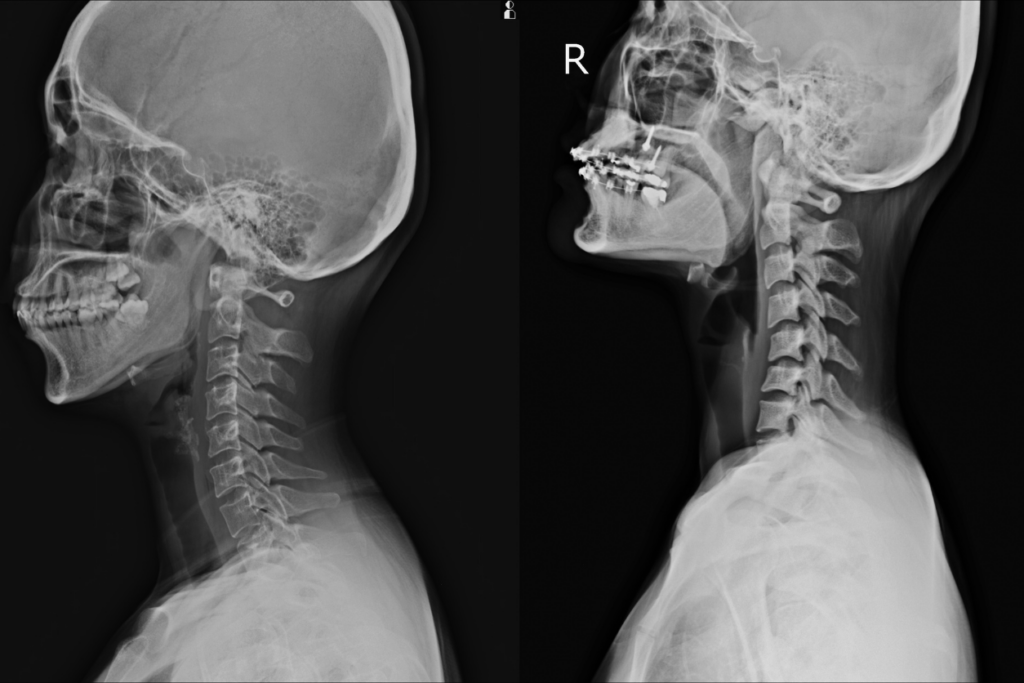Many Accidents Can Cause Herniated Discs At C4/C5 Or C5/C6: Here’s What You Need To Know

A car accident or other personal injury accident in Texas could leave you and your loved ones with various injuries, including injuries to your spine, neck, and the discs that separate your vertebrae. Herniated discs can cause significant pain and discomfort. This pain can make it difficult to sit, stand, or participate in other activities.
Your discs between the C4 and C5 vertebrae and between your C5 and C6 vertebrae are at an increased risk of herniation in a car accident. The more you know about this potential injury, the more empowered you will be to seek the medical care you need following an accident.
Hurt? Need a Lawyer? Hire Murray
Give us a call for a FREE & CONFIDENTIAL Case Review
Location of the C4, C5, and C6 Vertebrae
Your spine consists of 33 vertebrae divided into five sections. The cervical region is the topmost section of your spine and includes the first seven vertebrae and the discs that separate them. This region extends from the base of your skull to between your shoulders.
Each vertebra is numbered. Therefore, the designations C4, C5, and C6 refer to the fourth, fifth, and sixth vertebrae in your cervical region.
The discs that separate these vertebrae from one another have outer rings that contain a soft inner material. Their function is to give your spine flexibility and act as a shock absorber, reducing the chance of spinal cord injury in an accident.
How Your C4/C5 and C5/C6 Vertebrae Suffer Injury In an Accident
Whiplash is common in even low-speed crashes. While a seat belt keeps the body and other sections of the spine in place during a car crash, there is no similar restraint for the neck. The forces of a collision can cause your neck to snap violently forward, backward, or sideways, depending on your situation. This can cause the discs between your vertebrae to slip out.
A herniated disc occurs when the soft inner material of your disc breaks through a weak spot in the outer ring and enters the spinal canal. This can put pressure on the nerves that run through your vertebrae and cause pain.
Detecting Herniated Discs at C4/C5 and C5/C6
When you go to the hospital following a car accident, a common practice is for the staff to order X-rays to determine the extent of your injuries. However, herniated discs do not appear on X-rays. Other medical imaging tests, such as MRIs and CT scans, are needed to detect and diagnose herniated discs.
Symptoms can include:
- Pain that radiates from your neck down your arms or back
- Weakness in your shoulder muscles
- Numbness in your shoulders and arms (less common)
It is important to share any herniated disc symptoms with your medical team as soon as possible.
Dallas Herniated Disc Lawyer? Hire Murray
Give us a call for a FREE & CONFIDENTIAL Case Review
Treatment for Herniated Discs
Treating a herniated C4/C5 or C5/C6 disc depends on the severity of the problem. For mild cases, your doctor may tell you to rest for a few days and give you medication for the pain. You might also participate in physical therapy, ultrasounds, or massages to help manage lingering pain, regain flexibility, and return to normal activities.
Severe cases of herniated discs may require surgery. Under general anesthesia, a doctor makes an incision to remove the herniated disc and stabilize the spine.
Be Aware of the Risk of a Herniated Disc
Suffering a herniated disc in an accident is more common than you might realize. If you are a driver or passenger and are involved in a motor vehicle accident, make sure you are aware of the signs of a herniated neck disc. If you notice any radiating pain, shoulder muscle weakness, or numbness in your shoulders, ask your medical team to check you for a herniated disc.
Contact Our Dallas Personal Injury Lawyers at Jay Murray Car Accident and Truck Accident Lawyers For More Help
If you’ve been injured in an accident in Dallas, Texas, and need legal help, contact our Dallas personal injury lawyers at Jay Murray Car Accident and Truck Accident Lawyers to schedule a free consultation today.
Jay Murray Car Accident and Truck Accident Lawyers
2512 State St,
Dallas, TX 75201
(214) 855-1420
